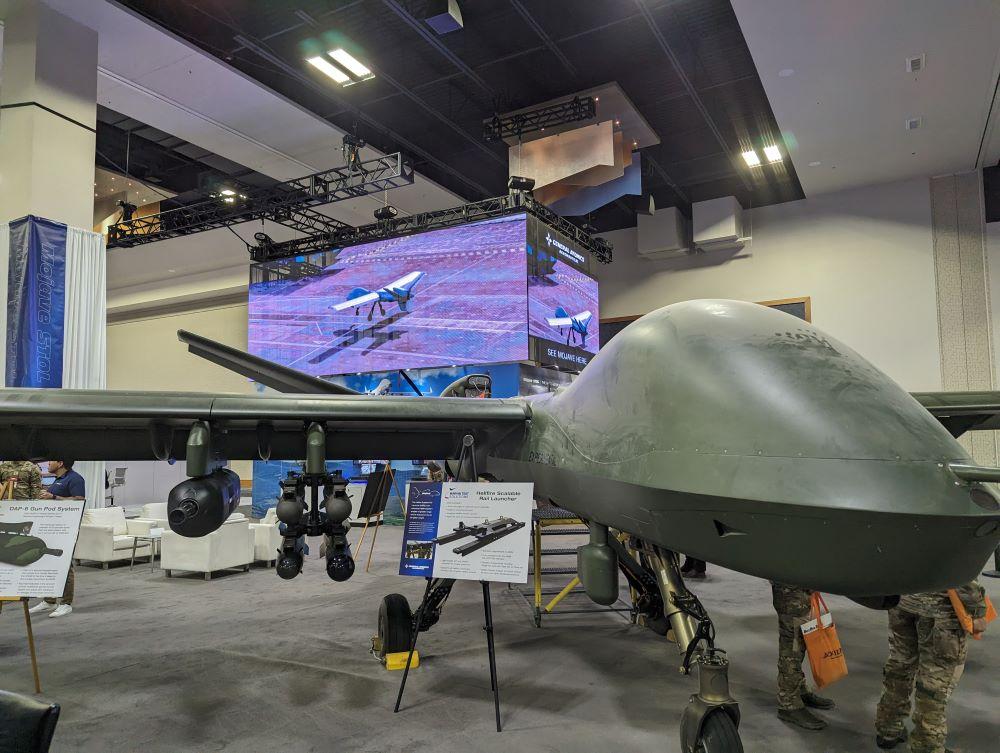
The GA-ASI Mojave UAS.
AURORA, Colorado—General Atomics-Aeronautical Systems Inc. (GA-ASI) did not even wait to clean off its Mojave short-takeoff-and-vertical-landing (STOVL) uncrewed aircraft system (UAS) after testing it in the Arizona desert before setting it up in the exhibit hall of the U.S. Army’s largest aviation conference here.
The Mojave, a variant of the company’s MQ-1C Gray Eagle designed for austere operations, sat covered in dust from Yuma Proving Ground as a deliberate display that the Army can fill a gap in the scout mission that follows the service’s decision to cancel the Future Attack Reconnaissance Aircraft (FARA) program, company President David Alexander tells Aerospace DAILY.
“We’re here today after FARA being canceled, we’re saying ‘Hey, unmanned is the future. If you want to do reconnaissance, with launched effects for small UAS, unmanned-unmanned teaming, that’s the platform for you,’” Alexander said April 26 at the Army Aviation Association of America summit.
The Mojave started with the U.S. Marine Corps as a short-takeoff-and-landing (STOL) UAS with long endurance and runway independence—characteristics that typically do not work well together.
“We wanted to get something that could be flown off dirt roads, very short takeoff and landing, and get decent endurance,” he says.
The Mojave can fly up to 25 hr.
As the program developed, GA-ASI also talked with the UK Royal Navy and demonstrated the aircraft taking off from the HMS Prince of Wales.
So far, the Mojave has flown 36 flights and almost 100 hr.
Looking forward, Alexander expects the first customers to be international, though the company is pitching it for the U.S. Army. The service already fields the Gray Eagle for a persistent, long-endurance mission, while the Mojave can be expeditionary, he says.
The company is also taking the STOL lessons from the aircraft for its larger MQ-9B. The aircraft’s wings and tails are modular, and the company plans to put the STOL versions onto the MQ-9B so that it can now operate on shorter runways.
“That’s getting a lot of attention, especially from countries that have [aircraft] carriers with no catapult,” Alexander says.
While the Mojave will be the initial demonstrator of the STOL capability, GA-ASI wants to do sea trials with two STOL MQ-9B variants for six months to a year.





